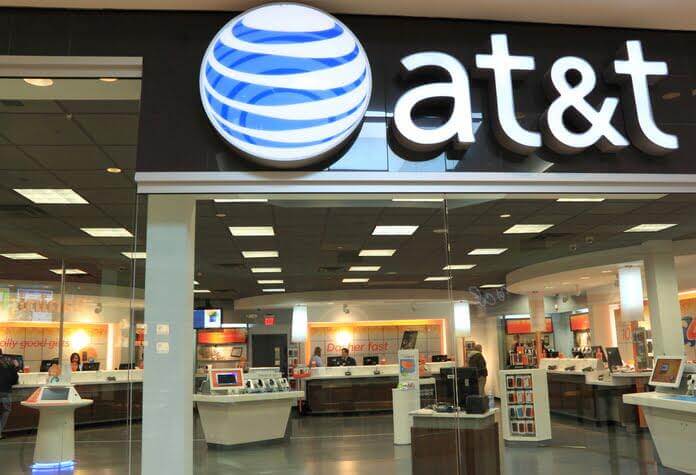Aside from the dividend, AT&T (NYSE:T) has been a letdown, with shares underperforming the S&P 500. This has been a lost decade for AT&T stockholders, as shares have decreased by 34.5%, while investing in an S&P 500 index fund, such as the SPDR S&P 500 Trust (NYSEARCA:SPY), would have provided a 164.80% return. Whatever AT&T achieved, regardless of the vast amounts of free cash flow (FCF) generated, the company was viewed as a mismanaged giant saddled with a massive debt. The rally was brief each time AT&T stock began to gather traction, and shares slid back into the red. Compared to the S&P 500, shares increased by 12.95% following an earnings beat and an increase in the 2022 outlook. Analysts began to commend AT&T stock after the third-quarter results were revealed, and after going through the earnings report and conference call, a decade of missed opportunities may finally be over.
In Q3, AT&T Delivered a Beat and a Raise
AT&T delivered in the third quarter, and the market reacted strongly to the release of the results and management commentary. AT&T had a quarterly beat on the top line, creating $30 billion in revenue, $140 million more than the consensus expectation, and a big surprise on the bottom line, generating $0.68 in EPS, a $0.07 increase. T’s improved outlook could significantly drive the stock’s price increase. Previously, AT&T expected standalone AT&T (AT&T after the WarnerMedia spinoff and other divestitures) to earn EPS in the $2.42 – $2.46 range. Based on consensus projections, the street was expecting $2.55 in earnings per share. AT&T boosted its 2022 EPS projection in the third quarter results release, expecting EPS from continuing operations to be $2.50 or higher for the fiscal year 2022.
Subscriber Growth in Q3
After reviewing the quarter, I believe AT&T is well-positioned to prove the market wrong and that this valuation is far too low. T generated 2.2 million postpaid phone net adds in their 5G wireless segment, and over 1 million net adds in fibre so far this year. AT&T gained 708,000 postpaid phones and 338,000 net fibre additions in Q3, making it the company’s second-best quarter for fibre. AT&T’s 11th consecutive quarter of more than 200,000 net fibre additions occurred in Q3. Its wireless revenue climbed by 5.6%, the most in more than a decade, while its internet revenue increased by 6.1%. AT&T had a solid third quarter, with revenue up 3.1% year on year and Adjusted EBITDA rising 4.7% from $10.2 billion to $10.7 billion.
AT&T’s Debt Load Is Still Being Reduced
AT&T has received the most criticism for its debt, followed by failed acquisitions. Yes, I prefer to see less debt on the balance sheet, and I feel the company is displaying fiscal discipline by working to reduce its debt load. AT&T had $151.01 billion in long-term debt and $24.62 billion in debt maturing in one year at the end of 2021. Despite AT&T’s ability to cover the loan, $175.63 billion in debt was too much for some investors. On the Q3 earnings call, Pascal Desroches said unequivocally that AT&T’s debt tower is made up of 4% yielding debt, 95% of which is fixed. He also clearly stated that AT&T’s debt maturities over the next several years will be easily serviced by the FCF remaining after the dividend of $8 billion.
AT&T’s debt load decreased by 22.59% at the end of Q2, falling from $175.63 billion to $135.96 billion. Long-term debt fell by -14.08%, from $151.01 billion to $129.75 billion, while debt maturing in one year fell by 74.78%, from $24.62 billion to $6.21 billion. In Q3, AT&T continued to reduce its debt load, staying true to its commitment to financial discipline and debt reduction. In the second quarter, the company decreased an extra $2.48 billion in debt, bringing its total debt load to $133.48 billion.
AT&T’s FCF in Q3 was in line with forecasts, and the company is confident that it will deliver $14 billion in FCF in 2022. The company generated $3.8 billion in FCF in the third quarter and anticipates EBITDA and FCF to rise in 2023. AT&T increased its cash from operations by around 10% in the third quarter. Its flywheel of businesses should continue to generate more significant FCF in the future years as revenues expand, and synergies leading expenses to drop are recognized. AT&T has already stated that it expects to generate approximately $20 billion in FCF, which I believe will be more than enough to fund the dividend and service its debt commitments. AT&T has a significant debt load, but it is manageable, and 2022 should persuade investors who were on the fence that management was serious about decreasing leverage.
AT&T’s Dividend Is Not Under Threat
During the Q3 results call, management stated unequivocally that AT&T’s dividend is not in jeopardy. They made it a point to clarify how their FCF is used and that there is enough FCF remaining after dividend distributions to cover its debt servicing commitments. AT&T’s CFO noted that management is satisfied with its cash levels following the dividend commitment and that it should improve in the coming years as cash conversion increases.
AT&T had a long history of increasing its dividend year after year. AT&T stock lost its Dividend Aristocrat classification along the line, and 36 years of yearly dividend hikes became meaningless. The dividend was cut since the corporation spun off WarnerMedia and divested other income-producing assets. AT&T did not lower the dividend because they were in difficulties; instead, the drop was due to a decline in FCF due to the corporation quitting specific areas.
AT&T pays a dividend of $1.11 per share for a 6.49% yield. AT&T’s FCF is allocated to its dividend program for $8 billion, representing a 57.14% payout ratio from its FCF. According to AT&T’s revised EPS guide, $1.11 represents 44.4% of the $2.50 EPS projection for 2022. AT&T’s dividend is not in jeopardy, and management has gone above and beyond to ensure investors that it will not be withdrawn or lowered further.
AT&T Stock Price Is Still Too Low
I enjoy analyzing a company’s valuation based on its FCF. FCF, in my opinion, is the most challenging profitability statistic to manipulate or create because it is unaffected by buybacks and write-offs. AT&T stock is still trading at 7.7 times its $14 billion FCF. Verizon (NYSE:VZ) recently posted earnings and is trading at 10.66x, while T-Mobile (NASDAQ:TMUS) is selling at 97.88x its FCF. Based on the level of FCF created and the multiples they trade at, I feel AT&T stock and Verizon stock are undervalued.
Featured Image- Megapixl @ Luckydoor
















